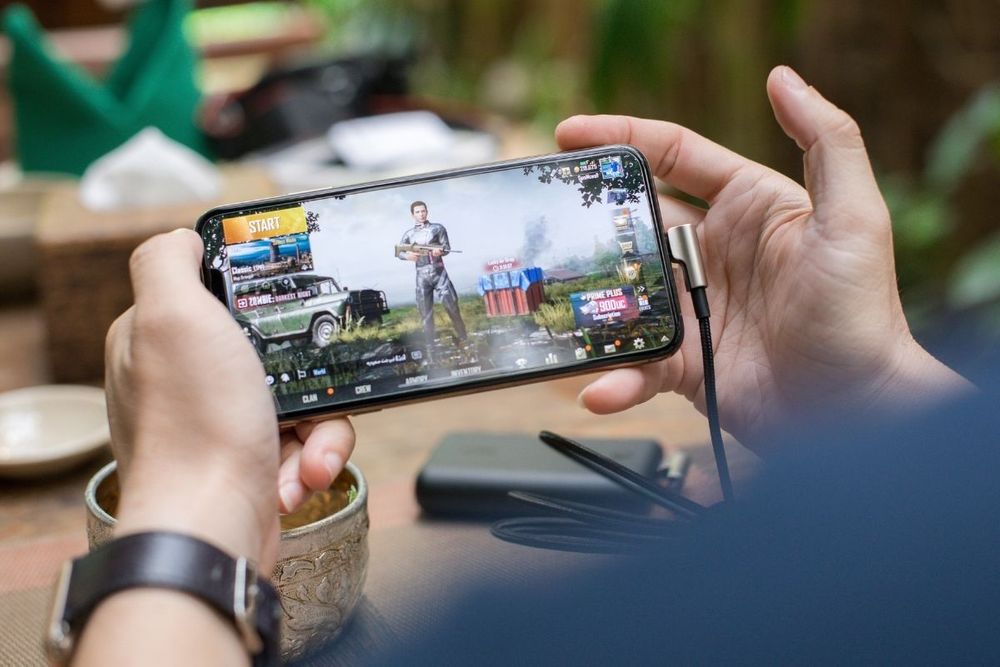Karam Malhotra, Partner and Global Vice-President of Singapore-based technology company SHAREit, explains what’s shaping the competitive mobile gaming landscape.
Mobile gaming continues its meteoric rise, retaining a loyal fan base while attracting new followers and audiences year-on-year. Over and above the surge in demand amidst ever-changing consumer expectations, emerging trends are an ever-present component of the gaming world. The increase in the number of smartphones happens as more and more games become freely available, aided by fast technological advancements, thus reimagining the gaming experience and opening up a whole new set of possibilities for end-users.
Amid the COVID-19 outbreak, online gaming has emerged as one of the best stay-at-home entertainment options. People are playing more games than ever before, which translates into skyrocketing downloads while engagement and time spent playing online games have also made headway. Players of all ages and skill levels have made substantial investments in time, effort, and dedication – and their newfound levels of interest and enjoyment will not be easily cast aside.
The regional landscape as it stands
Games market insights and analytics firm Newzoo’s Global Games Marketing Report states that 2.8 billion gamers worldwide will help the market generate a whopping $189.3 billion in revenue. Evolving markets like Southeast Asia (SEA) and the Middle East and North Africa (MENA) will account for a sizeable chunk of these new revenues. A good deal of the high-profile game titles are currently active here, with Middle Eastern gamers generating a substantial share of the League of Legends’ $1.75 billion revenues in 2020, as an example.
Marketers should note that MENA is one of the fastest-growing gaming markets worldwide, giving rise to a host of prospects and possibilities for all connected parties – gamers, software designers, equipment makers, marketing teams, and advertisers, to name a few. The regional gaming industry is growing at a 25% rate each year, with the Middle East boasting the world’s most active gaming community, according to Newzoo.
In the region, the UAE is second only to Egypt for the highest proportion of gamers with 65%, followed by Saudi Arabia at 61%, says online market research company YouGov. In both countries, mobile gamers – who play on their smartphones or tablets – outnumber others who prefer to game on computers or consoles. For instance, 57% of gamers in the UAE do so via mobile and 79% of that group play on a light-to-regular basis. Similarly, in Saudi Arabia, 52% are mobile gamers and of these, 76% play on a light-to-regular basis. These figures will only increase in 2021, driven by favorable trends.
What lays ahead in 2021?
Today’s gaming land- scape is similar to other global trends: integrated and fast-paced. The rising popularity of mobile gaming doesn’t exhibit any signs of slowing down, setting the stage for greater demand and subsequently fiercer competition.
Though it may seem improbable, casual and hardcore gaming have always advanced simultaneously. Casual and hyper-casual games are simple, and usually adopt a freemium model for monetization. The ones with a seamless blend of ad experience and mechanics appeal to the widest category of players. On the other hand, hardcore games rely on a smaller but more committed audience that makes further in-app purchases and pays to download. According to App Annie, casual games dominate downloads, with the popularity of easy-to-use mobile games on track to surpass $120 billion in consumer spending in 2021, capturing 1.5 times the market of all other gaming platforms combined.
Over the coming year, the move to 5G and the introduction of new devices will spur the growth of hyper-casual and core multiplayer games – with people seeking more immersive, powerful entertainment and social connections with like-minded players. A prominent example of a platform catering equally to members of both gaming groups is SHAREit. The app hosts “simpler” games such as Subway Surfers and Hill Climb Racing on its gaming center, allowing casual players easy access on the go.
Of course, not everyone is into hyper-casual games; so, the platform also introduces specific audiences to hardcore games, such as first-person shooting games. Although these cannot be played on SHAREit’s gaming platform directly, it helps users discover them so that they can download and play them separately. Also, SHAREit allows players to transfer heavy games in no time and zero data. This example will likely inspire others to follow suit in 2021 and beyond, presenting a window of opportunity for advertisers and marketers.
In mobile gaming terms, marketing is perhaps best defined as implementing different approaches to introduce relevant games to specific audiences. Such strategies can be implemented in various ways, through social media, content publication, landing pages, etc. In truth, opportunities to deliver successful projects are by no means limited, as several trends have become more apparent than ever over this year.
In-play advertising will become more frequent
Ads are a viable avenue to provide consistent revenue streams that allow developers to drive and sustain long-term innovation. Generating revenues is essential and the least disruptive, most useful form of in-play advertising focuses on rewarded video content to provide meaningful experiences. In 2021, more in-play ads will emerge at the forefront of the advertising landscape, enabling more extended gameplay and content discovery without hindering the gaming experience.
Live-streaming popularity will continue to rise
Across demographics and games genres, videogame watching has increased significantly. Viewers are emotionally attached to e-sports teams around the globe, thus engendering the creation of gaming communities. This brings about a new and highly effective marketing channel, which not only helps in user acquisition but also in players retention.
Greater localization will entice bigger audiences
Most games have the opportunity to gain more users globally. To ensure catering to larger audiences, many online gaming companies are customizing their games to suit regional specifics. Since the MENA region has the world’s most active gaming community, tremendous opportunities lay ahead. Game developers and publishers will turn to marketers and advertisers to, effectively and persuasively, localize their content in order to meet the requirements, demands, and preferences of local, Arabic-speaking consumers.
Leveraging customer insights
By leveraging detailed customer insights regarding positives, negatives, feedback, recommendations, different parts of individual games that are played heavily, and the parts that cause uninstalls, marketers can design their offerings around retention and monetization on a data-driven basis. This year will see more and more marketers and advertisers upskill their technical acumen in this regard.
More data monetization
The process of using data to increase revenue is another mobile gaming trend that will continue to increase. This works particularly well for mobile games with many active users on a daily basis; higher numbers of marketers and advertisers will collect transferred non-personal data to develop their campaigns to greater effect.
Expansion of e-sports
E-sports have recently witnessed substantial market demand due to new normal conditions. League of Legends and Dota 2 are two notable examples of influential actors in the e-sports business. Activities in this direction have driven the overall gaming industry across the globe. Looking ahead, this trend will continue to grow, with marketing and advertising playing a key role.
Gaming and socialization
During lockdowns, many resorted to gaming to socialize and connect with other people. Huge gaming events saw thousands of players coming together, providing valuable platforms for multiple marketing channels. This cultural influence will continue to foster the rise of more multiplayer games in the coming year – something gaming marketers will monitor with great interest and be involved with whenever opportunities arise. As the mobile gaming industry continues to evolve across the region, developers will look to partners that can help them retain existing users, attract new audiences, and expand their market presence.
These trends will shape the competitive landscape for years to come and help elevate mobile gaming to even greater heights in terms of market share, revenue, and popularity.
This article was published in Communicate’s Q1 edition. You can access the full magazine here.
Canonical Link: https://communicateonline.me/category/industry-insights/post-details/assessing-the-mobile-gaming-marketing-trends-of-2021
Copyright © MediaQuest Corp. All rights reserved.









